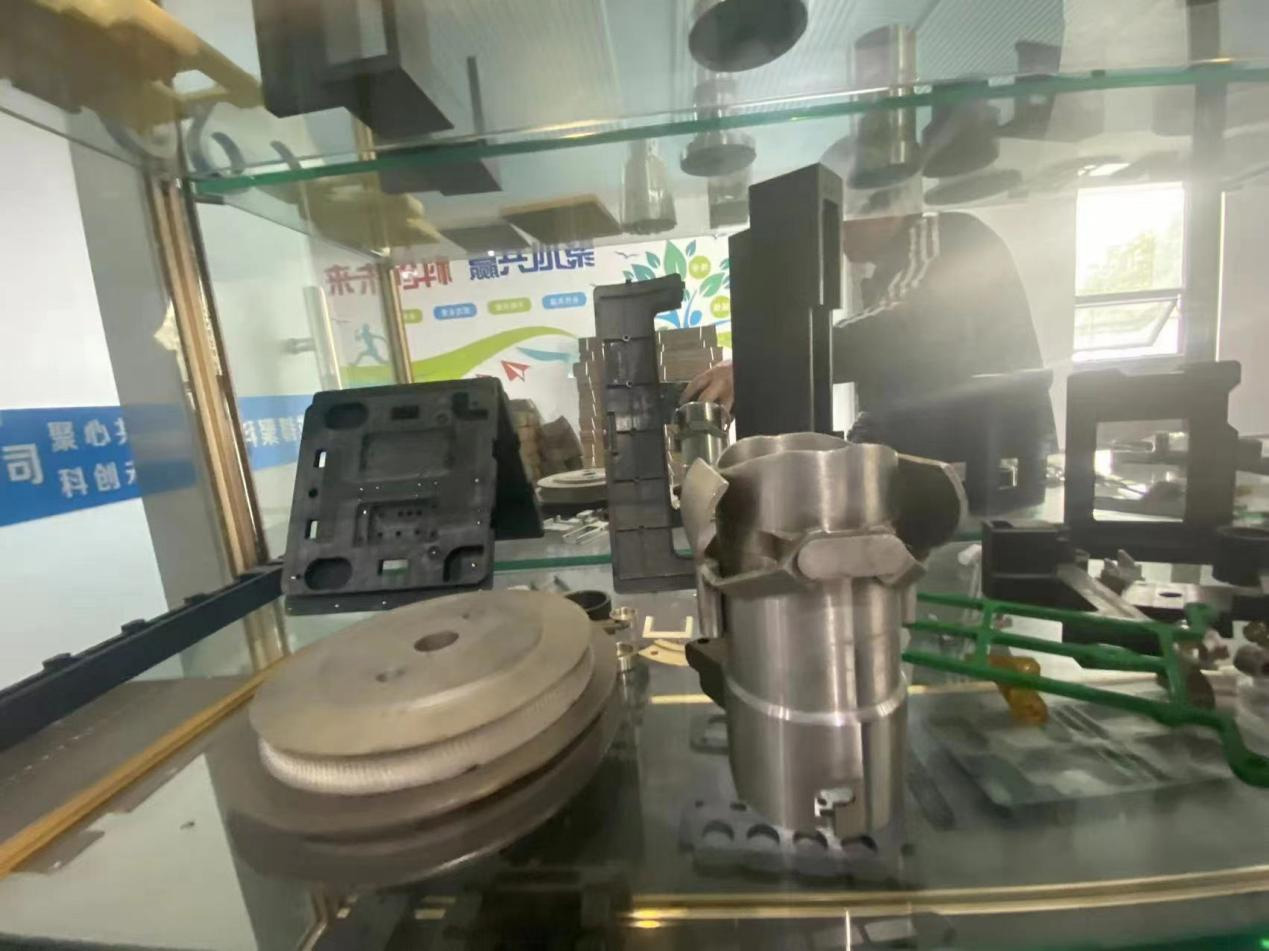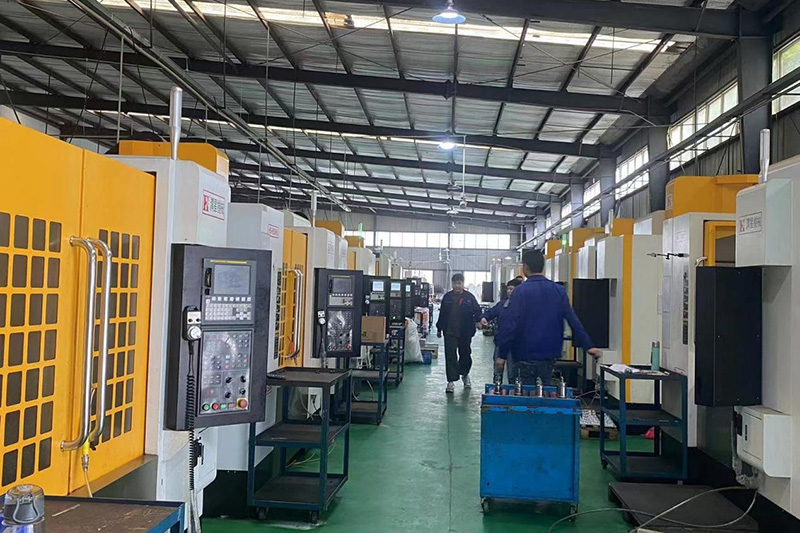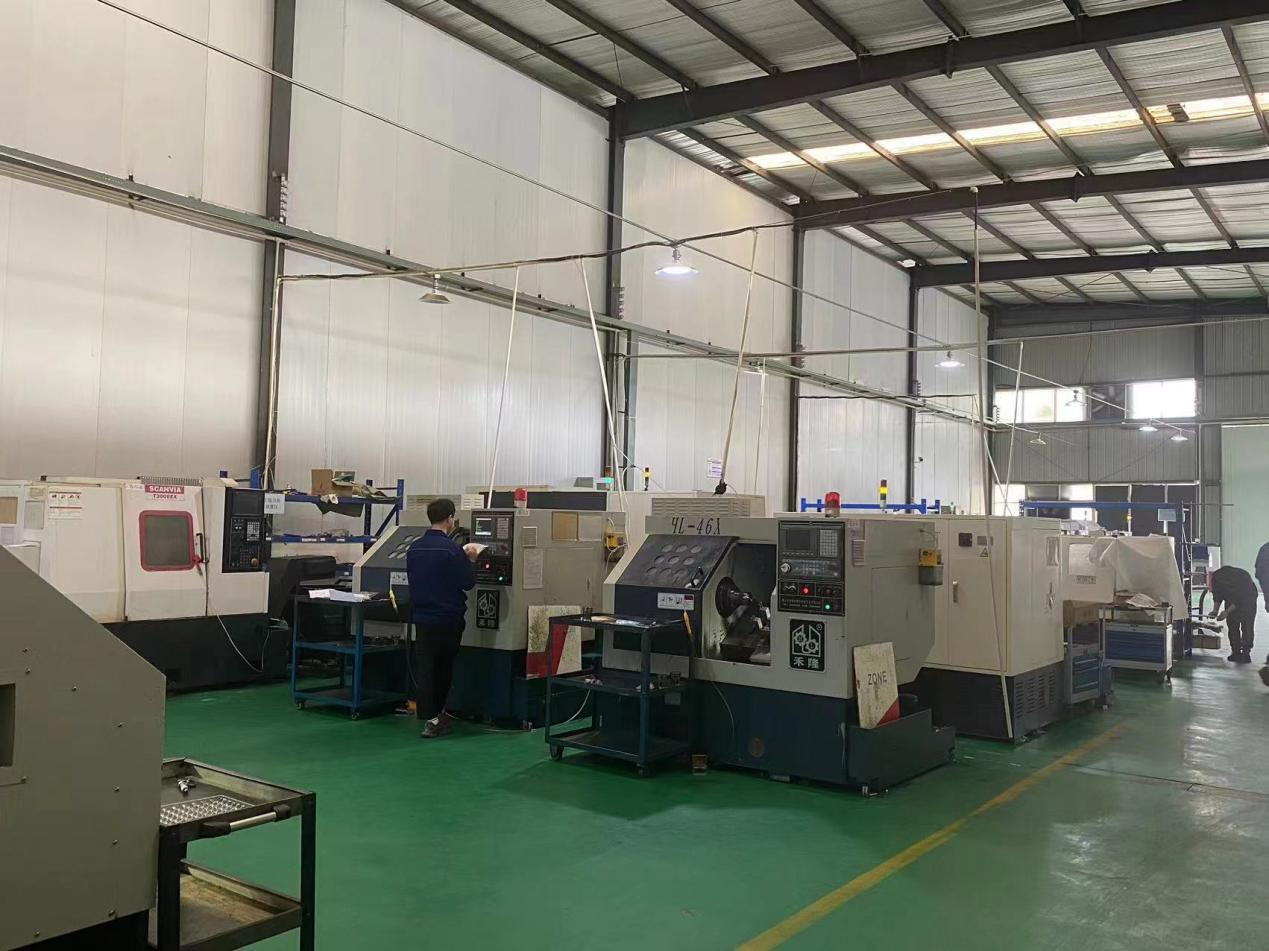CNC engraving machines are skilled in precision machining with small tools and possess the ability to milling, grinding, drilling, and high-speed tapping. They are widely used in various fields such as the 3C industry, mold industry, and medical industry. This article collects common questions about CNC engraving processing.
What are the main differences between CNC engraving and CNC milling?

Both CNC engraving and CNC milling processes use milling principles. The main difference lies in the tool diameter used, with the commonly used tool diameter range for CNC milling ranging from 6 to 40 millimeters, while the tool diameter for CNC engraving processing ranges from 0.2 to 3 millimeters.
Can CNC milling only be used for rough machining, while CNC engraving can only be used for precision machining?

Before answering this question, let's first understand the concept of the process. The processing volume of rough machining is large, while the processing volume of precision machining is small, so some people habitually consider rough machining as "heavy cutting" and precision machining as "light cutting". In fact, rough machining, semi precision machining, and precision machining are process concepts that represent different processing stages. So, the accurate answer to this question is that CNC milling can do heavy cutting or light cutting, while CNC engraving can only do light cutting.
Can CNC engraving process be used for rough machining of steel materials?
Judging whether CNC engraving can process a certain material mainly depends on how large a tool can be used. The cutting tools used in CNC engraving processing determine its maximum cutting capacity. If the shape of the mold allows the use of tools with a diameter exceeding 6 millimeters, it is strongly recommended to first use CNC milling and then use carving to remove the remaining material.
Can adding a speed increasing head to the spindle of the CNC machining center complete engraving processing?
Unable to complete. This product appeared at an exhibition two years ago, but it was not possible to complete the carving process. The main reason is that the design of CNC machining centers considers their own tool range, and the overall structure is not suitable for engraving processing. The main reason for this erroneous idea is that they mistook the high-speed electric spindle as the only feature of the engraving machine.

What are the main factors that affect carving processing?
Mechanical processing is a relatively complex process, and there are many factors that affect it, mainly including the following: machine tool characteristics, cutting tools, control systems, material characteristics, processing technology, auxiliary fixtures, and surrounding environment.
What are the requirements for the control system in CNC engraving processing?
CNC engraving processing is primarily milling processing, so the control system must have the ability to control milling processing. For small tool machining, feedforward function must be provided to slow down the path in advance and reduce the frequency of tool breakage. At the same time, it is necessary to increase the cutting speed in relatively smooth path segments, in order to improve the efficiency of engraving processing.
What characteristics of materials will affect processing?
The main factors affecting the carving performance of materials are material type, hardness, and toughness. The material categories include metallic materials and non-metallic materials. Overall, the higher the hardness, the worse the workability, while the higher the viscosity, the worse the workability. The more impurities, the worse the workability, and the greater the hardness of particles inside the material, resulting in poorer workability. A general standard is: the higher the carbon content, the worse the workability, the higher the alloy content, the worse the workability, and the higher the non-metallic element content, the better the workability (but the non-metallic content in general materials is strictly controlled).
What materials are suitable for carving processing?
Non metallic materials suitable for carving include organic glass, resin, wood, etc. Non metallic materials not suitable for carving include natural marble, glass, etc. Suitable metal materials for carving include copper, aluminum, and soft steel with a hardness less than HRC40, while unsuitable metal materials for carving include quenched steel, etc.
What is the impact of the cutting tool itself on the machining process and how does it affect it?
The cutting tool factors that affect engraving processing include tool material, geometric parameters, and grinding technology. The cutting tool material used in carving processing is hard alloy material, which is a powder alloy. The main performance indicator that determines the material performance is the average diameter of the powder. The smaller the diameter is, the more wear-resistant the tool is, and the higher the tool durability will be. More NC programming knowledge focuses on WeChat official account (NC programming teaching) to get the tutorial. The sharpness of the tool mainly affects the cutting force. The sharper the tool, the lower the cutting force, the smoother the processing, and the higher the surface quality, but the lower the durability of the tool. Therefore, different sharpness should be selected when processing different materials. When processing soft and sticky materials, it is necessary to sharpen the cutting tool. When the hardness of the processed material is high, the sharpness should be reduced to improve the durability of the cutting tool. But it cannot be too blunt, otherwise the cutting force will be too large and affect the machining. The key factor in tool grinding is the mesh size of the precision grinding wheel. A high mesh grinding wheel can produce finer cutting edges, effectively improving the durability of the cutting tool. Grinding wheels with high mesh size can produce smoother flank surfaces, which can improve the surface quality of cutting.

What is the formula for tool life?
The tool life mainly refers to the tool life during the processing of steel materials. The empirical formula is: (T is the tool life, CT is the life parameter, VC is the cutting line speed, f is the cutting depth per revolution, and P is the cutting depth). The cutting line speed has the greatest impact on tool life. In addition, tool radial runout, tool grinding quality, tool material and coating, and coolant can also affect tool durability.
How to protect carving machine equipment during the processing?
1) Protect the tool setting device from excessive oil erosion.
2) Pay attention to the control of flying debris. Flying debris poses a great threat to the machine tool. Flying into the electrical control cabinet can cause a short circuit, and flying into the guide rail can reduce the lifespan of the screw and guide rail. Therefore, during processing, the main parts of the machine tool should be sealed properly.
3) When moving the lighting, do not pull the lamp cap as it can easily damage the lamp cap.
4) During the machining process, do not approach the cutting area for observation to avoid flying debris that may damage the eyes. When the spindle motor is rotating, it is prohibited to perform any operation on the workbench.
5) When opening and closing the machine tool door, do not forcefully open or close it. During precision machining, the impact and vibration during the door opening process can cause knife marks on the processed surface.
6) To give the spindle speed and then start processing, otherwise due to the slow start of the spindle, the desired speed may not be reached before starting processing, causing the motor to suffocate.
7) It is prohibited to place any tools or workpieces on the crossbeam of the machine tool.
8) It is strictly prohibited to place magnetic tools such as magnetic suction cups and dial gauge holders on the electric control cabinet, as this may damage the display.

What is the function of cutting fluid?
Pay attention to adding cooling oil during metal processing. The function of the cooling system is to remove cutting heat and flying debris, providing lubrication for machining. The coolant will move the cutting belt, reducing the heat transferred to the cutting tool and motor, and improving their service life. Take away flying debris to avoid secondary cutting. Lubrication can reduce cutting force and make machining more stable. In the processing of copper, the use of oily cutting fluid can improve surface quality.
What are the stages of tool wear?
The wear of cutting tools can be divided into three stages: initial wear, normal wear, and sharp wear. In the initial wear stage, the main reason for tool wear is that the tool temperature is low and does not reach the optimal cutting temperature. At this time, the tool wear is mainly abrasive wear, which has a greater impact on the tool. More NC programming knowledge focuses on WeChat official account (digital control programming teaching) to receive the tutorial, which is easy to cause tool breakage. This stage is very dangerous, and if not handled properly, it may directly lead to tool breakage and failure. When the tool passes the initial wear period and the cutting temperature reaches a certain value, the main wear is diffusion wear, which mainly causes local peeling. So, the wear is relatively small and slow. When the wear reaches a certain level, the tool becomes ineffective and enters a period of rapid wear.
Why and how do cutting tools need to be run in?
We mentioned above that during the initial wear stage, the tool is prone to breakage. In order to avoid the phenomenon of breakage, we must run in the tool. Gradually increase the cutting temperature of the tool to a reasonable temperature. After experimental verification, comparisons were made using the same processing parameters. It can be seen that after running in, the tool life has increased by more than twice.
The method of running-in is to reduce the feed speed by half while maintaining a reasonable spindle speed, and the processing time is approximately 5-10 minutes. When processing soft materials, take the small value, and when processing hard metals, take the large value.
How to determine severe tool wear?
The method to determine severe tool wear is:
1) Listen to the processing sound and make a harsh call;
2) Listening to the sound of the spindle, there is a noticeable phenomenon of the spindle holding back;
3) Feeling that the vibration increases during processing, and there is obvious vibration on the machine tool spindle;
4) Based on the processing effect, the processed bottom blade pattern may be good or bad (if this is the case at the beginning, it indicates that the cutting depth is too deep).
When should I change the knife?
We should replace the tool at around 2/3 of the tool life limit. For example, if the tool experiences severe wear and tear within 60 minutes, the next processing should start changing the tool within 40 minutes and develop the habit of changing the tool regularly.
Can severely worn tools continue to be machined?
After severe tool wear, the cutting force can increase to three times normal. The cutting force has a significant impact on the service life of the spindle electrode, and the relationship between the service life of the spindle motor and the force is inversely proportional to the third power. For example, when the cutting force increases by three times, processing for 10 minutes is equivalent to using the spindle for 10 * 33=270 minutes under normal conditions.
How to determine the extension length of the tool during rough machining?
The shorter the extension length of the tool, the better. However, in actual machining, if it is too short, the length of the tool needs to be adjusted frequently, which can greatly affect machining efficiency. So how should the extension length of the cutting tool be controlled in actual machining? The principle is as follows: φ A tool bar with a diameter of 3 can be processed normally by extending 5mm. φ The 4-diameter cutter bar can be processed normally by extending 7mm. φ The 6-diameter cutter bar can be processed normally by extending 10mm. Try to reach below these values when cutting. If the length of the upper tool is larger than the above value, try to control it to the depth of processing when the tool wear. This is a bit difficult to grasp and needs more training.
How to handle sudden tool breakage during processing?
1) Stop machining and view the current serial number of the machining.
2) Check if there is a broken blade at the cutting point, and if so, remove it.
3) Analyze the cause of the broken tool, which is the most important. Why did the tool break? We need to analyze from the various factors that affect processing mentioned above. But the reason for the broken tool is that the force on the tool suddenly increases. Either it's a path issue, or there's excessive tool shaking, or there are hard blocks in the material, or the spindle motor speed is incorrect.
4) After analysis, replace the tool for processing. If the path has not been changed, machining should be carried out one number ahead of the original number. At this time, it is necessary to pay attention to reducing the feed speed. This is because the hardening at the tool break is severe, and it is also necessary to perform tool running-in.
How to adjust processing parameters when rough machining is not good?
If the tool life cannot be guaranteed at a reasonable main axis speed, when adjusting parameters, adjust the cutting depth first, then adjust the feed speed, and then adjust the lateral feed rate again. (Note: Adjusting the cutting depth also has limitations. If the cutting depth is too small and there are too many layers, the theoretical cutting efficiency may be high. However, the actual processing efficiency is affected by other factors, resulting in too low processing efficiency. At this point, it is necessary to replace the cutting tool with a smaller one for processing, but the processing efficiency is higher. Generally speaking, the minimum cutting depth cannot be less than 0.1mm.).
Post time: Apr-13-2023




